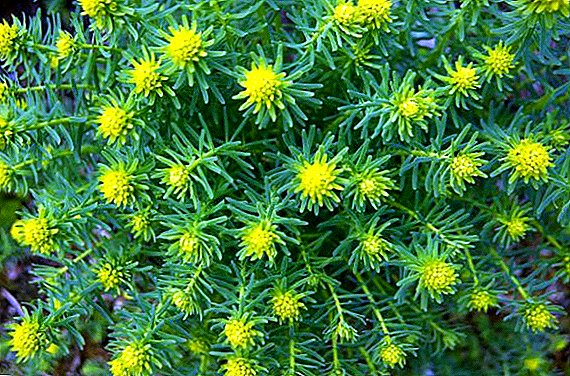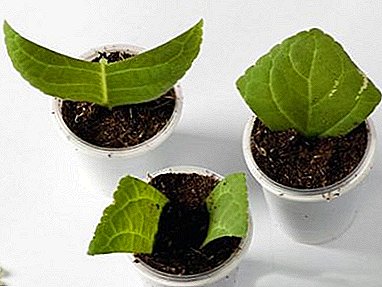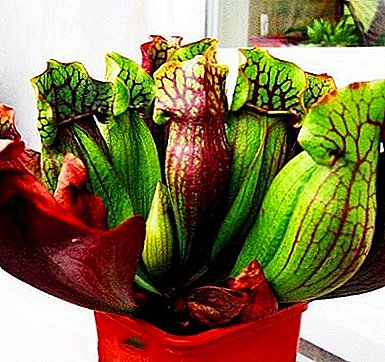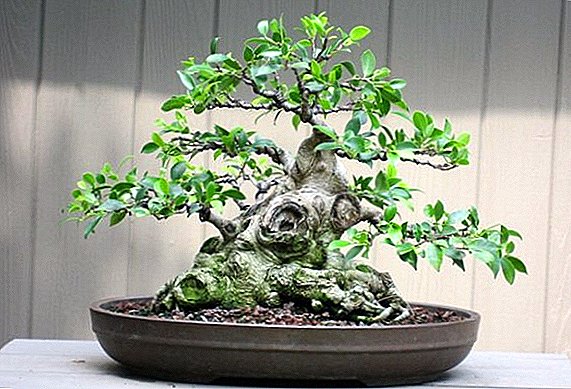 Each of us wants the house to be cozy, well-groomed and at the same time modern, so we often adopt the trends of the West or the East. Nowadays, bonsai, small domesticated copies of street trees, come into vogue. But this is by no means a dwarf tree species, because bonsai is grown from the same materials as large trees. Therefore, today we will tell you where to start work if you have never tried yourself in the role of the creator of indoor trees, namely, the choice of plants, soil, pot and the process of growing green sculptures.
Each of us wants the house to be cozy, well-groomed and at the same time modern, so we often adopt the trends of the West or the East. Nowadays, bonsai, small domesticated copies of street trees, come into vogue. But this is by no means a dwarf tree species, because bonsai is grown from the same materials as large trees. Therefore, today we will tell you where to start work if you have never tried yourself in the role of the creator of indoor trees, namely, the choice of plants, soil, pot and the process of growing green sculptures.
The best species to form a miniature tree
To grow a tree in a pot to please the eye, you need to take the choice very seriously. We offer beginner bonsai masters to pay attention to the well-known ficus. One of the advantages of this flower is its rapid growth - you can form a bonsai in just three years, when it may take a dozen years for other plants.
Did you know? Art called bonsai originated in China and India, but in the 6th century it migrated to Japan along with the monks, where it was developed — they distinguished as many as 15 styles of growing small trees.
So, if you are a novice gardener, we recommend giving preference to the ficus:
- Bengali
- rust red;
- blunt;
- karika (fig);
- microcarp;
- Benjamin;
- ginseng (ginseng).







These species are characterized by small leaf sizes, as well as a well-developed root system and aesthetic appearance. Of all these varieties of ficus, you can choose a plant that is most suitable for you and your interior.
Conditions for growing ficus bonsai
The process of growing a miniature tree can be considered an Eastern practice, especially Buddhists and simply lovers of Asian culture. To get a result that will please both the soul and the eye, we will have to work hard, but first we will decide what conditions are best for indoor gardening.
We advise you to find out what bonsai is and what types of decorative bonsai exist.
How to choose a pot
There are several requirements for the pot in which you place the sprout. It must be broad so that the root system has enough space. In addition, the stability of the container is important: tree, though room, but still quite heavy.

To avoid falling bonsai, choose a massive, steady pot. Another prerequisite is the presence of holes through which excessive moisture will flow. In addition, we recommend to give preference to not too deep pots, then the composition will look much more aesthetic.
Important! If the pot was previously used to grow another plant, rinse it well. Thus you eliminate the possibility of contamination of soil diseases. In addition, the remnants of the previous soil can hinder the development of the plant.
Soil requirements
Another reason why you need to start growing small trees is from ficus, - This is the simplicity of the plant. This also concerns the land in which it will grow. However, there is a mixture that has a beneficial effect on the ficus, which means that it will be stronger and healthier.

This mixture consists of fertile sod, leaf earth, sand and charcoal. Take the first two components in equal parts, the sand will need half as much, and the coal will serve as an organic additive.
You can also buy land for growing ficus in a specialty store. As a soil, you can also take a slightly acidic substrate, because it is universal.
Learn how to water your ficus at home.
Choosing a place for a pot
People who have ever grown flowers or vegetables know that there are certain requirements for plant placement. Then they develop better and are in a favorable environment. Because the bonsai is a room resident, we advise you to pay attention to the western or eastern side of the dwelling and place the tree there.

Also, bonsai favors semi-dark places, so putting the plant on the window sill is not necessary at all - you can place it on the floor, thereby protecting it from falling from a height.
Did you know? Despite the fact that bonsai is considered a sculpture room, it can be placed in the garden or courtyard, on the balcony. However, it is necessary to comply with all the conditions necessary for the life of the tree.
Microclimate in the room
Ficus bonsai is unpretentious, as we said. This also concerns the temperature regime. It is important to remember two rules so that everything is in order with the plant. The first - This is to maintain a constant air temperature. It is desirable that it be about 20 ° -25 ° C, that is, room temperature, because ficuses are quite thermophilic. The second - make sure that the tree is not blown through by a draft.

If bonsai you still located on the window, make sure that it does not fall too much ultraviolet radiation - it can burn the leaves.
How to choose a form to create a tree
There are several types of indoor tree:
- Tökkan, he is a classic one. Beginners should choose this form, because it is the most simple. Bonsai grows up like a regular tree. There are no branches at the bottom, as well as bends or several branches.
- Moyogi it is also called the wrong upright. The crown of this tree is small, it never goes beyond the limits of the container in which it grows.
- Sykan. This type is characterized by a strong slope of the trunk of the tree, and its roots are on the ground surface.
- Sokan, he is a forked bonsai. The two trunks have a common root system. In this case, one of them is more than the other, such a trunk is called the parent.
- Hokidati, sometimes it is called broom-like. The divergence of the branches and roots of the trunk of this type of bonsai should be uniform, the same.
- Esueeue This species is also called a grove. The explanation is simple: in one vessel there are several different ficus. They can differ both in appearance and age. It is important that the number of ficuses was more than five.






Please note that such leafy trees as hornbeam, willow, birch, Norway maple, oak, ash, as well as fruit trees can be used for growing bonsai, in this case plum, apple or hawthorn are suitable, among the conifers they choose Korean fir, Chinese juniper, cryptomeria, ordinary or black pine.
Ficus bonsai: step by step instructions
Now let's figure out how to build the shape of our tree. No wonder that in Japan, bonsai has become an art that takes decades to comprehend. However, it will take much less time to give the ficus the desired shape. How to do this - tell you next.
How to form the root of a miniature tree
- The first thing to do is to work on the ficus root system. After all, we need the plant to develop not only in height, but also in breadth. To do this, you need to prune the roots and shoots of a young plant.
- The next step is to transfer the ficus to the pot you chose for bonsai.
- After transplanting, you also need to trim the roots and twigs of the flower. You need to do this procedure until you see that the future trunk of the tree has reached the desired thickness.



Video: Benjamin Ficus Bonsai
Cropping and crown formation
To get the conceived shape of the crown, you need to arm yourself with small, but sharp scissors. Begin to cut the leaves from the lower tier and gradually rise to the top of the tree. It is important to know that not the leaves themselves should be cut, but the stalks should be.

It will be necessary to carry out such a procedure quite often - the leaves on the ficus grow quickly, therefore, as soon as there are a dozen new leaves on the plant, you can pick up a tool and reduce their number to four, not more.
Did you know? The fluid that is released on the ficus after circumcision, in fact, is latex.You can also shorten the branches of the plant, if they do not fit into your vision of the crown shape. Then you will need a special tool, as well as garden pitch - they will lubricate the places of cuts.
Engaging in the formation of the crown is undesirable in the autumn and winter months - this is the period of rest when the tree gains strength. But summer and spring are great for such an activity. In addition, we advise you to do general circumcision of extra branches and leaves before the beginning of spring - the ficus will be ready for active growth and development.

How to give the desired shape of the trunk
We offer you two ways by which you can give the desired shape of a tree trunk.
We share the secrets of successful cultivation of plants at home - achimenes, aspidistra, callas, crocuses, lithops, kalerii, hamedorei, euonymus, ruell, strawberry tree.
The first option is called a garter. To do this you need a strong rope or wire. Attach one end of the selected material to the top of the bonsai, the other - on any part of the trunk. As a result, you get a tree that is bent down.

The second option is the formation using wire. You will need to wrap the ficus with wire, thereby giving the form that you want. Start the procedure with the winding of the trunk, then move to the branches. However, there are several important points. Formation can be made only a few weeks after transplanting bonsai. The wire must be chosen thin so that it does not damage the plant. It is desirable to give preference to the material with insulation. It is also impossible to wind the wire to the branches and the trunk too tightly, since traces may remain on the plant.

It is possible to remove the wire frame in 2-2.5 months, by this time the bonsai will have taken the form that you showed him with the help of a wire.
Important! When removing the frame must use scissors. If you want to simply unwind the wire, you will most likely break the branch.
Ficus bonsai: proper care
Despite the fact that bonsai grown from ficus is a reduced copy of the ficus, the care of the plant will require a little different.
For example, you need to water the tree daily. This is justified by the fact that the pot chosen by you is small anyway. So, the earth in it will dry much faster than in a large container. However, it is necessary to use a small amount of liquid for irrigation, otherwise you may damage the root system with excess moisture.

In the warm season, you can use the spray and periodically splash water on the bonsai. If you do not have time for this, then raise the humidity of the environment with the help of a water tank or a room fountain, an air humidifier.
In the cold months, these same methods can be used if there is a battery or another heating device next to the tree.
Feed the ficus fertilizer can and should be. The fact is that the soil in the bonsai tank is usually a little, and the minerals and trace elements are washed out fairly quickly - because the plant needs to be watered daily. Therefore, it is possible to enrich the soil with useful substances at any time of the year. To do this, you can resort to using funds intended for ficus or indoor palm trees.
Important! To fertilize a room tree, you only need half the dose of fertilizer indicated on the package.
It is necessary to work the soil in the winter and autumn months once in 30 days, in the spring and summer - twice as often, that is, every 14 days.

Difficulties in growing miniature trees
The need to take care of the tree every day is not the only problem you may encounter. There are several problems that you may encounter after you give the plant the desired shape. Below we describe the symptoms and the reason for their appearance, so that you return your healthy appearance to your creation as soon as possible.
Drying leaves, twisting them at the tips. This problem is associated with an excess of ultraviolet radiation. Perhaps the plant does not have enough shade or the sun shines too much, as is often the case in summer. In this case, you can change the place where the bonsai is located, or you can remove it in the shade when the sun warms up as actively as possible.

Mass subsidence of leaflets. It occurs if the tree: 1) cold from the draft; 2) little sunlight; 3) cold from the water you water it.

Darkening of the foliage, the appearance of gray spots on it, as well as the appearance of mold and moss on the ground. The reason for this reaction of the tree is a greater amount of moisture. This problem can be solved by reducing the amount of water for irrigation. In severe cases, the bonsai will need to be transplanted - the soil will be damaged, respectively, the root system can get sick very soon and your creation will die.

Fading of foliage, appearance of folds on the bark. Indicates a lack of water. To improve the plant, take a bowl, fill it with water, then place a tub with a potted tree in it - bubbles should appear on the surface. When they appear, roll up the ficus with a plastic bag for two days. This will help to increase the level of air humidity.

Water is present on the surface of the earth after watering for a long time. So the ficus makes it clear that he needs a different ground. The only correct solution in this situation is to transplant the plants and replace the soil with a lighter one that has been treated with fertilizer. 
Important! The soil in which the root system of the tree is located does not need to be washed off. It is better to put the ficus in the tub, where there is a layer of sand at the bottom, and periodically fling through the ground.
Now, after familiarizing yourself with the basics of bonsai cultivation, think about whether you have enough patience and strength to grow it. After all, this is a laborious process, and one should not forget about the plant for a single day. If you are sure that your interior really needs such a green sculpture, then arm yourself with our advice, patience and forth - to comprehend the ancient Japanese art.
Reviews from the Internet















